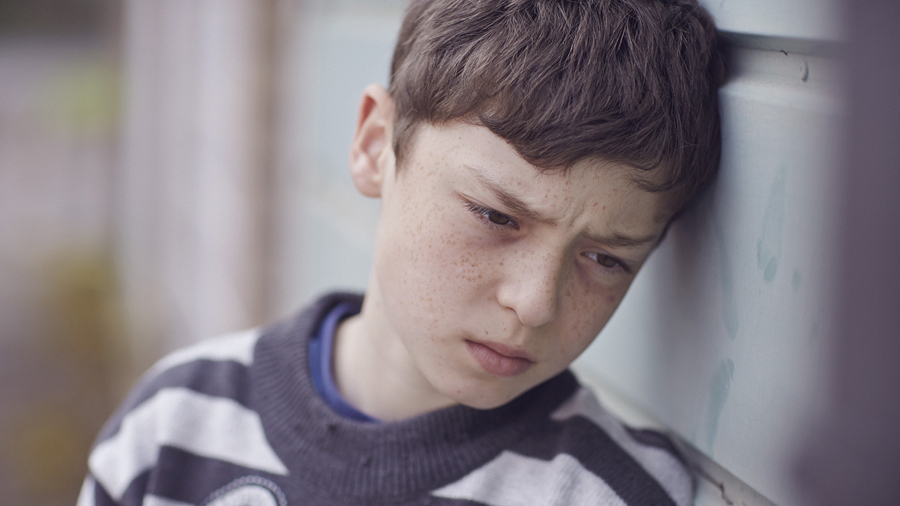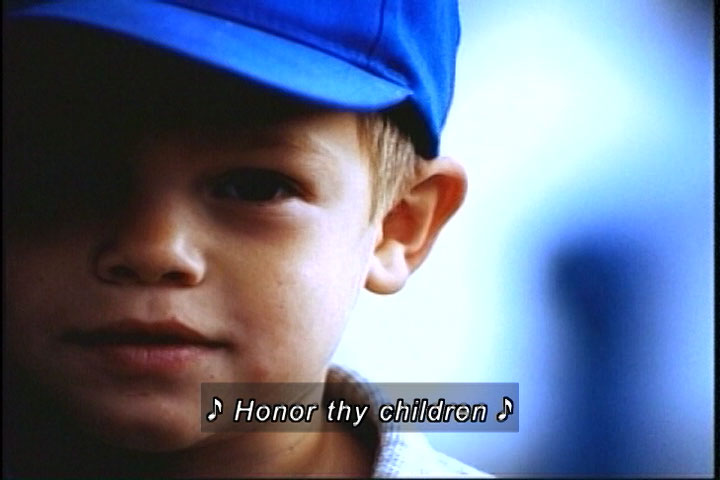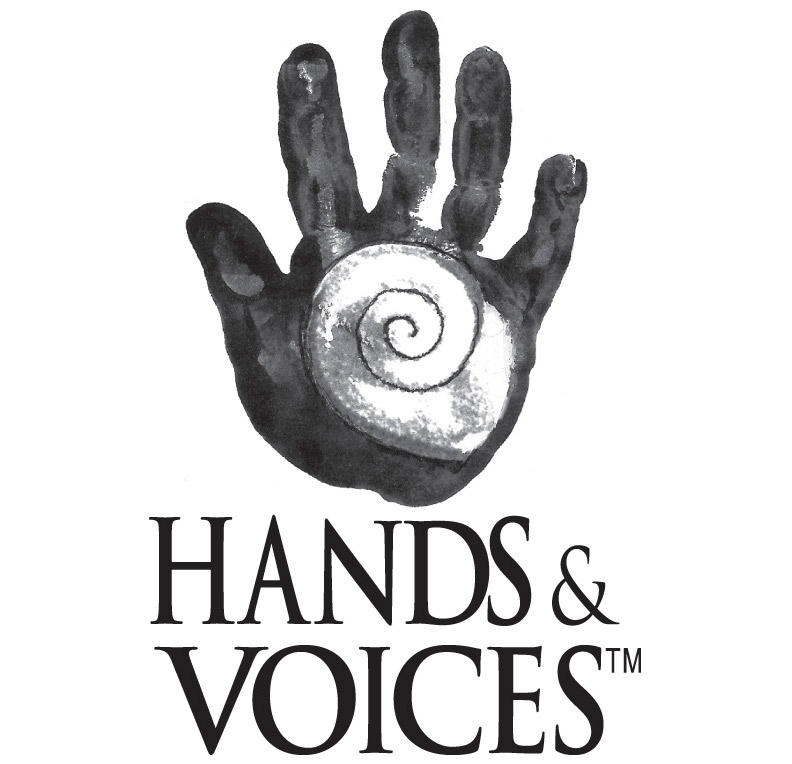<< Learning Center
Media Accessibility Information, Guidelines and Research
Child Abuse and Neglect: CA/N
By Harold Johnson
Introduction
Stories of child abuse and neglect (CA/N) represent a horrific reality that is difficult to comprehend, much less accept. Unfortunately, such difficulty does not stop people like the Wisconsin "Predator Priest" from abusing over 200 boys at the St. John's School for the Deaf. In reality, the best available research indicates that CA/N is experienced by children with disabilities at a rate that is three times that experienced by their nondisabled peers (Sullivan & Knutson, 2000). CA/N destroys lives, devastates families, and damages organizations.

Accept and Recognize
Communication is the key to stopping this destruction; it is a key that will not only protect your children from CA/N, it will also enhance their learning and language skills. Through the simple acts of
- accepting the fact that our children are at significant risk for CA/N
- becoming informed regarding the signs of CA/N
- observing, understanding, and responding to our children through open and frequent conversations
- trusting our "gut" when something does not feel right
- asking for advice when we are unsure of what to do
we can reduce the incidence and impact of CA/N. Sounds simple, but it's not. Simply thinking about CA/N feels creepy. Admitting that our children are at increased risk feels like it somehow increases their risk. Talking to anyone— much less our own children—about predators, unsafe situations, or selfprotection strategies can make us feel very uncomfortable, especially since this type of abuse and exploitation are beyond what most of us could even imagine doing to anyone.

Protect
But just because we can't imagine ever hurting another person in this way doesn't mean no one else can. You can help protect our children from experiencing CA/N by
- Watching a 4-minute, captioned music video that portrays the realities of CA/N:
Collin Raye's "Eleventh Commandment" music video
- Becoming informed regarding the behaviors that are exhibited by children who are experiencing CA/N:
The Child Welfare Information Gateway, Recognizing Child Abuse and Neglect: Signs and Symptoms, contains a two-page checklist of observable behaviors
- Having daily conversations with your children/students about what they are doing, who they are with, and how they are feeling; then listen to your gut when something does not feel right, and when it feels wrong, seek advice:
Call the ChildHelp hotline at 1-800-4-A-CHILD to talk with a counseling professional who will help you better understand the information you are getting from your child. Hotline professionals are available 24 hours a day, seven days a week. There is no cost for the call, and all information is kept confidential. If, as a result of the call, you remain concerned, you will be given information regarding how you can act to protect the child.
Note: A "Deaf and Hard of Hearing Children Helpline" has been established at 1-800-222-4453.
Follow Through
The three above tasks sound "doable," yet research would predict that you will not follow through with the three requested tasks. The reasons you may fail to act are as follows:
- You do not believe that CA/N is a significant problem
- ou are uncertain how to recognize or report possible incidences of CA/N
- You are afraid of the possible consequences (for yourself and for the child) of reporting your CA/N concerns
- You do not think anything will happen if you do share your concerns
- You think that someone else will do what needs to be done
(Alvarex, Kenny, Donohue, & Carpin, 2004; Bonner, & Hensley, 1997; Kenny, 2001, 2004)
What you may not realize is that individuals who abuse our children are "counting" on you not to act. In order to increase the likelihood of their success, abusers carefully select which children to abuse. Children who are lonely, have poor self-esteem, and, most importantly, do not have frequent and open communication with their parents, are selected for abuse. This fact is reinforced by Amy Hammel-Zabin (2003) in her text entitled Conversations With a Pedophile when she states, "If the pedophile picks up the message that your children can go home and communicate, the pedophile will back off. Those kids are the safest kids in the world" (p. 231).
Act

You are not alone in your fears, concerns, and need for support. Three years ago the Hands & Voices (H&V) parent organization recognized parents' and professionals' need for help in protecting their children from CA/N. H&V acted by establishing a Colorado-based group of parents, who, in collaboration with Harold Johnson at MSU, have been gathering information, trying out strategies, and finding resources to protect our children. Recently, the Association of College Educators of the Deaf and Hard of Hearing and the Convention of American Instructors of the Deaf have joined in this effort. Additional agencies and organizations (e.g., ASDC, CEASD, AG Bell, EHDI, NAD, RID, and CIT) are being asked to join this effort to protect our children from CA/N. (Note: If you are a member of these organizations, please ask them to join in this effort.) You can find all of the resources that have been gathered on this topic by going to the Deaf Education Community of Learners Concerning Child Abuse & Neglect wiki.
Conclusion
Our children are at significant risk for CA/N. We can reduce that risk through daily conversations with our children. During those conversations we will use our ability to observe, understand, and respond to not only protect our children, but also enhance their learning and language skills. The choice is ours. Will you act to protect our children from CA/N?
References
Alvarex, K.M., Kenny, M.C., Donohue, B., & Carpin, K. M. (2004). Why are professionals failing to initiate mandated reports of child maltreatment, and are there any empirically based training programs to assist professionals in the reporting process? Aggression and Violent Behavior, 9, 563-578.
Bonner, B.L. & Hensley, L.D. (1997). State efforts to identify maltreated children with disabilities: A follow-up study. Child Maltreatment, 2(1), 52-60.
Hammel-Zabin, Amy (2003). Conversations with a pedophile. Barricade Books, Inc., Fort Lee, NJ. Kenny, M. C. (2001). Child abuse reporting: Teachers' perceived deterrents. Child Abuse & Neglect, 25, 81-92.
Kenny, M. (2004). Teachers' attitudes toward and knowledge of child maltreatment. Child Abuse & Neglect, 28, 1311-1319.
Sullivan, P.M., & Knutson, J.F. (2000). Maltreatment and disabilities: A population-based epidemiological study. Child Abuse & Neglect, 24(10), 1257-1273.
About the Author
Harold Johnson is a professor of special education (deaf/hard of hearing) at Michigan State University (MSU). Prior to his arrival at MSU, he was a professor at Kent State University (1980-2006), a public school administrator (1975-1977) and a teacher of students who were deaf/hard of hearing (1971-1975). His research focuses upon how web-based technologies and resources can be used to reduce isolation, facilitate collaboration, recognize excellence and enhance teaching/learning within K-20 deaf education. He is now focusing his research efforts on the incidence and impact of child abuse and neglect as experienced by children who are deaf/hard of hearing.
hjohnson@msu.edu [e-mail]
517-432-3926 [voice]
35.8.171.220 [video phone]
Tags:
Please take a moment to rate this Learning Center resource by answering three short questions.
